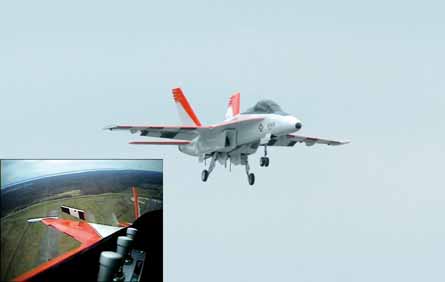Flight-control specialist Athena Technologies has demonstrated the autonomous recovery and landing of an unmanned air vehicle after significant in-flight damage. The test involved a subscale Boeing F/A-18 UAV that ejected an aileron in flight to simulate battle damage, but Athena says the technology could be applied to manned platforms, including civil aircraft.
Athena¹s damage-tolerant flight-control system detected the aileron loss, adapted the control laws to regain baseline aircraft performance and autonomously landed the damaged UAV, says Ben Motazed, senior vice-president business and strategy. This initial demonstration was limited to lateral control, but the company is looking for follow-on funding to perform more aggressive testing, he says.
|
|---|
Athena's system detected the aileron loss and landed the vehicle |
Warrenton, Virginia-based Athena was awarded the demonstration contract in
2005 under the US Defense Advanced Research Projects Agency-led Joint Unmanned Combat Air Systems programme, which was terminated. The goal was to enable unmanned combat aircraft to operate in high-threat environments by providing damage-tolerant flight control.
The vehicle used for the test was a 23kg (50lb) F/A-18 radio-control model converted to an autonomous UAV with the installation of Athena¹s GuideStar 111m flight-control computer. After ejection of the aileron, Motazed says, the system detected the loss in control authority and automatically adjusted the roll-control gains to recover the baseline performance. ³We had the same response before and after,² he says.
³It is purely adaptive. Nothing is pre-scripted,² says Motazed. ³The control laws determine what has to be done to recover the baseline response, no matter what the source or type of damage, and land the vehicle in gusts and turbulence.² The control system flew the UAV to a GPS/inertial-only autonomous landing ³within a few feet² of the target touchdown point, according to Athena. Motazed believes the technology could be transitioned ³near term² to unmanned or manned aircraft.
Source: Flight International
























